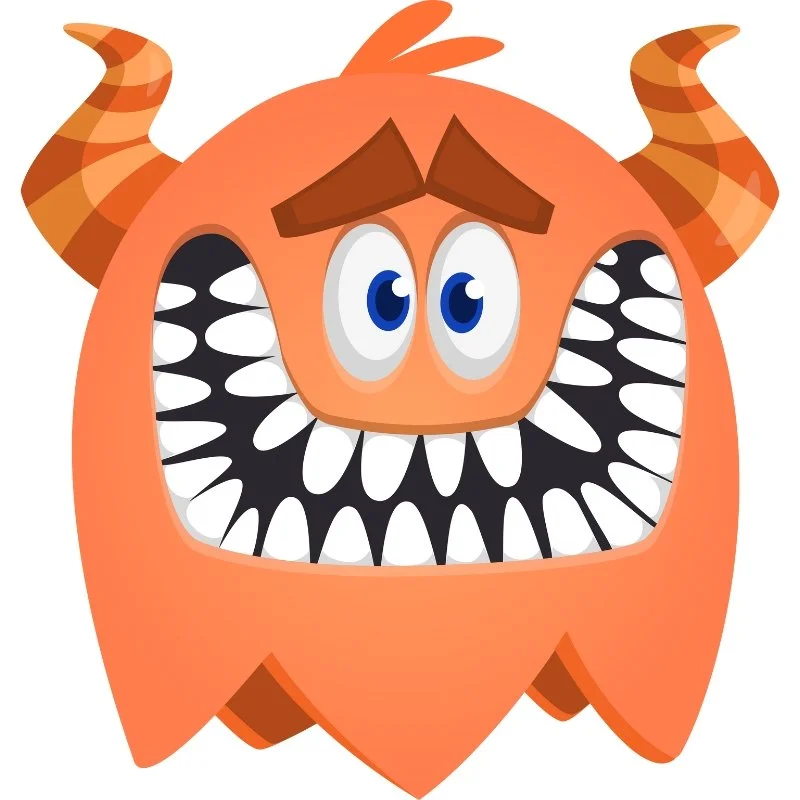Quiver – The Panic and Freeze Response Monster
Quiver is one of the Visiting Neuro Monsters. Quiver represents the sudden surge of panic that overtakes the body and the freeze response that follows when threat feels overwhelming. Known as the Panic and Freeze Response Monster, Quiver embodies the trembling shock that locks you in place, unable to act or respond. Within the Neuro Monsters Universe, Quiver reveals how fear can paralyze the nervous system, creating the experience of being stuck in panic while the mind and body shut down into immobility.
The Symbolic Role of Quiver
Quiver symbolizes the trembling stillness that rises when danger feels too great to fight or flee. Its presence shows up in panic attacks, in moments when you feel frozen in fear, or when your body shuts down in overwhelming situations. Symbolically, Quiver represents the survival instinct that stops motion to protect you, yet also traps you in helplessness. By naming Quiver you begin to notice when immobility is the body’s attempt to shield itself and when it becomes a barrier to recovery and action.
Quiver often appears as a fragile, trembling figure cloaked in icy shadows. Its form shakes and wavers, unable to step forward yet unable to collapse completely. This image reflects the fragile balance of panic and paralysis. Facing Quiver with emotional neutrality allows you to see the freeze response as a survival pattern rather than a personal failure.
Panic and Freeze in the Brain
In neuroscience terms Quiver is tied to the amygdala, the periaqueductal gray, and the dorsal vagal complex. The amygdala sends out alarm signals that trigger panic and activate stress hormones. The periaqueductal gray in the midbrain initiates the freeze response when the nervous system perceives no path of escape. The dorsal vagal system then shuts down energy and slows bodily functions to protect against overwhelming threat.
Quiver symbolizes this pattern where panic floods the system and then collapses into paralysis. The brain attempts to save energy and prevent harm but creates the experience of being trapped, reinforcing cycles of fear and helplessness.
The Protective Instinct Behind Quiver
Although it can feel terrifying, Quiver’s instinct is protective. Panic is the nervous system’s rapid alarm designed to detect danger and prepare for immediate survival. The freeze response is the final option when neither fight nor flight feels possible. The purpose is to minimize harm by staying still, avoiding detection, or conserving energy. The problem comes when this protective instinct is activated in situations that do not truly require it, leaving you stuck in panic without a way to release the energy. By seeing the protective purpose behind Quiver you can begin to work with the freeze response rather than against it.
Training with Quiver
Training with Quiver means learning how to gently unfreeze the body and calm the panic loop. Cognitive Neuro Therapy emphasizes naming the panic neutrally and guiding the nervous system into small, safe movements.
When Quiver appears you can practice the following steps. Pause and recognize the trembling stillness as a survival state. Name it as freeze rather than as weakness. Focus first on breathing slowly and evenly to signal safety to the body. Add micro-movements such as wiggling fingers or shifting the eyes side to side to reintroduce mobility. Ground yourself by pressing your feet against the floor or placing a hand on a stable surface. These actions begin to break the frozen state without forcing sudden change.
Over time Quiver begins to ease not by being eradicated but by being trained. You learn that panic and freeze are signals of overwhelm, not signs of failure. By practicing steady grounding and gentle reactivation you discover that immobility can transform into choice. Quiver becomes a reminder that even in the most paralyzing fear, there are ways to soften the freeze and reclaim your sense of movement.


